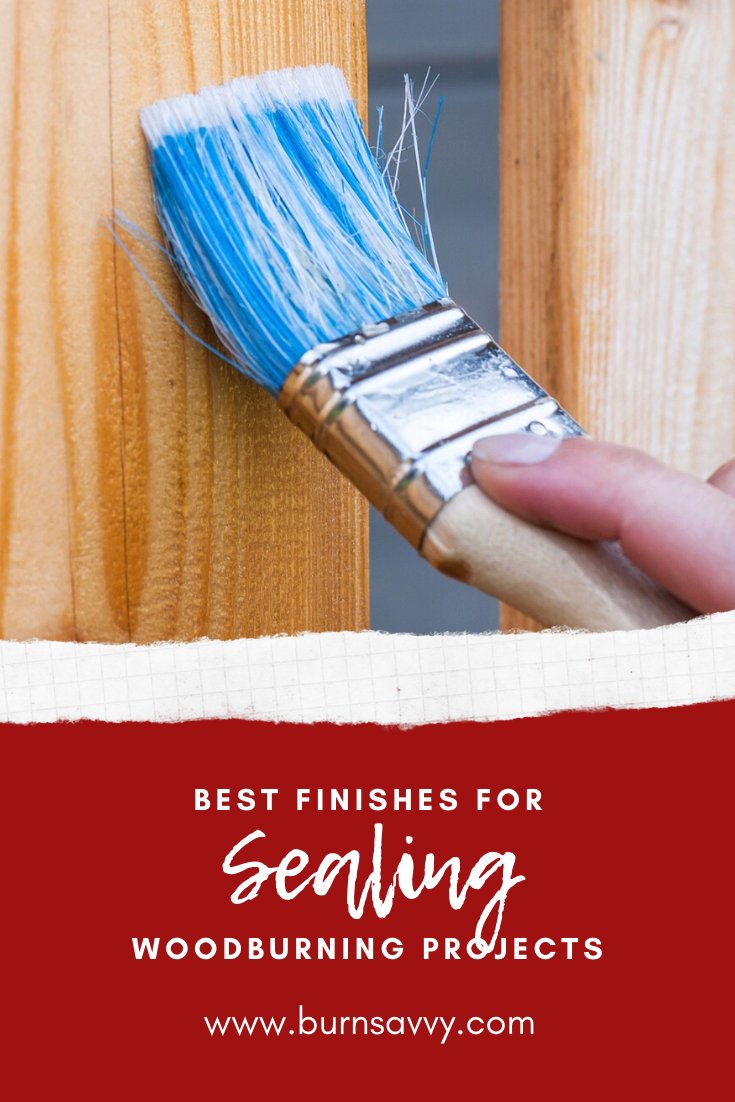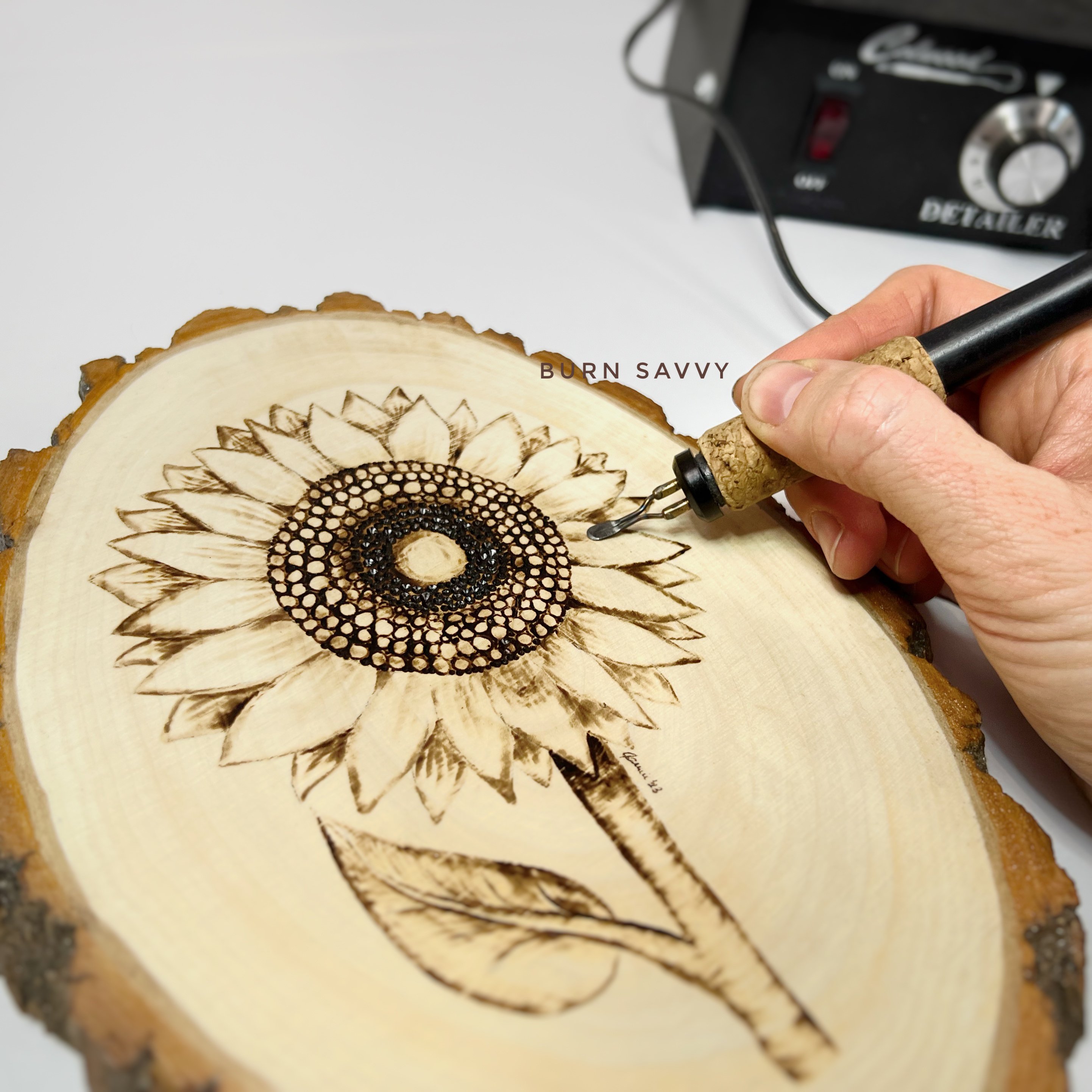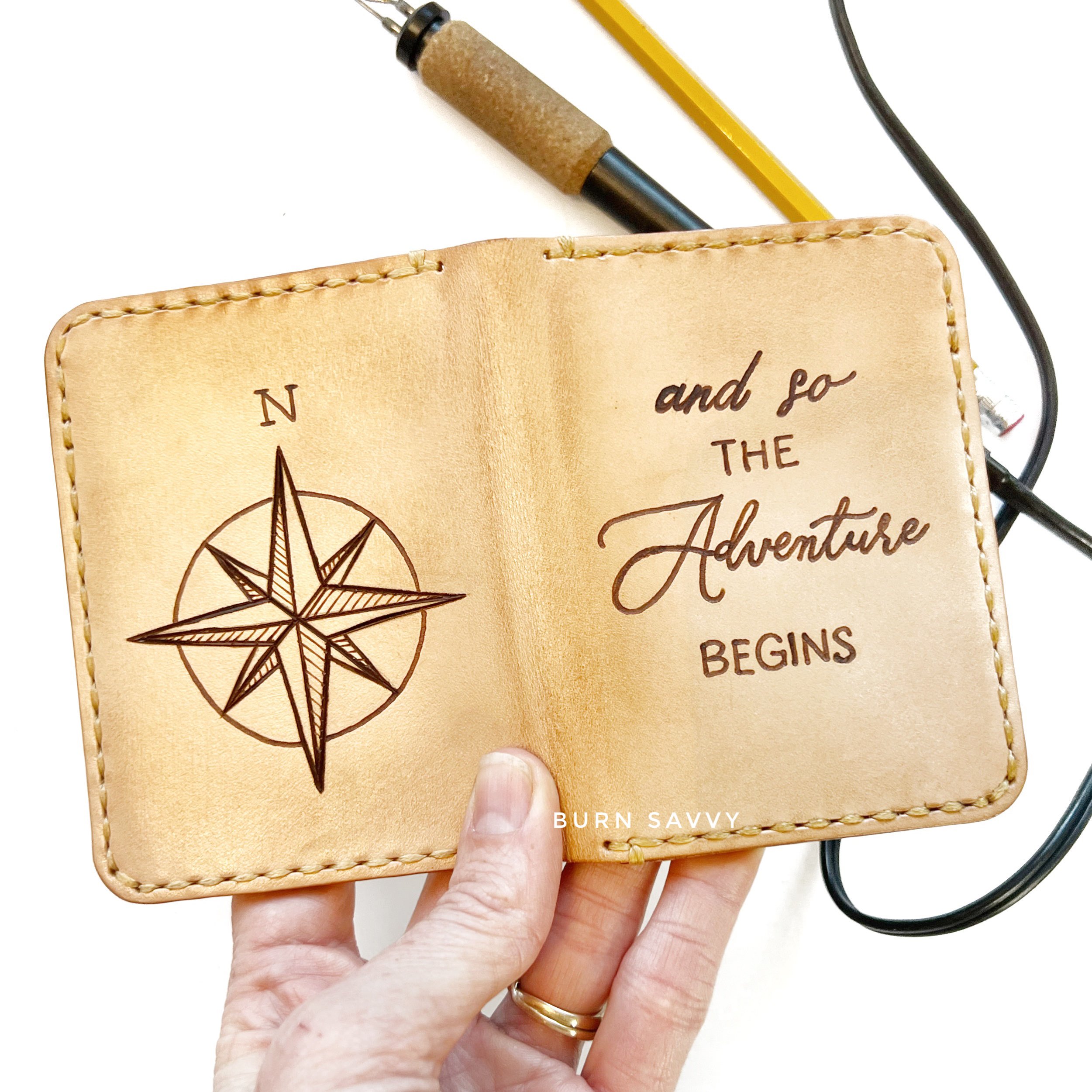Finishes:
Sealing Woodburning Projects For Long Lasting Art
Sealing woodburning projects is the best way to make your pyrography art stand the test of time.
What's the big deal about finishes?
The truth is, burns tend to fade over time. They fade faster with time, sunlight and use.
You'll want a different finish depending on the project you're doing. For example, you'll use a different sealant for wall art or jewelry than you will for a food-safe cutting board or wooden spoon.
So now that you're done burning, it's time to finish strong! (heh heh, see what I did there? #punnerd)
Here's a list I made for you of different woodburning finishes based on the project you're working on, along with some pros and cons to each one.

Disclosure: This post contains affiliate links. If you buy something through them they throw me a small commission at no extra cost to you. I believe in these products so you know you are in good hands. ;) Plus it helps me to keep making *awesome* free content for you (learn more). I appreciate your support!
Want To Learn How To Wood Burn?



Courses are now available on the Burn Savvy YouTube channel membership!
Go see which level suits YOU best. ⇣
General Finishes for Sealing Woodburning Projects
These finishes are great for wall art, jewelry, and other general pyrography projects.
It's best to have something that will protect your work from sunlight coming in the windows (a.k.a. UV protection). But some of those finishes yellow over time.
You also want protection from fingerprints (especially if you sell your stuff at an art show or craft fair where people might touch it with their greasy hands... ewww).
FYI - While I prefer the matte finished look, high gloss finishes tend to be tougher and more durable.
That said, here are some great options for sealing woodburning projects.
Spar Urethane (liquid or spray):
- comes in a range from matte to glossy finish
- UV protection
- great for heavily used indoor/outdoor items, like furniture
- some kinds yellow over time
Polycrylic (liquid or spray):
- comes in a range from matte to glossy finish
- doesn't yellow over time
- great for heavily used indoor items, like furniture
- no UV protection
Polyurethane (liquid or spray):
- comes in a range from matte to glossy finish
- great for heavily used indoor items, like furniture
- yellows over time
- no UV protection
- smooth glassy finish
- thicker finish protects artwork more than other finishes
- some have UV protection
- yellows over time
- smooth matte finish
- no UV protection
- must be reapplied on occasion, especially for heavily used items, like furniture
- matte finish
- no UV protection
- may need to be reapplied on occasion, especially for heavily used items, like furniture
- quick and easy to apply
- doesn't yellow over time
- comes in a range from matte to glossy finish
- matte finish may dry cloudy (especially over paint)
- less protective than other finishes
- no UV protection
Outdoor Projects
When sealing woodburning projects that will end up outside, just remember that burns are not match for the sun.
In other words, they fade faster.
Most finishes crack pretty fast in the weather too.
These finishes do pretty well. Reseal it every year for the longest lasting protection.
- comes in a range from matte to glossy finish
- UV protection
- water resistant (if you seal the whole thing!)
- penetrates wood
- yellows over time
- comes in a range from matte to glossy finish
- UV protection
- water resistant (if you seal the whole thing!)
- some kinds yellow over time
Food Safe Finishes
I burned a lot of wood spoons and cutting boards when I first started out.
When sealing woodburning projects for the kitchen, start with an oil first. This penetrates the wood to protect it from long term use and prevents cracking.
Then add a water resistant coating to the outside. It's like adding a shell to keep the water out.
Step 1: Oil
Generally, you should let oil dry for 15-30 minutes before adding another coat, wiping it off, or continuing to Step 2. Unless it's tung oil. That takes 7-8 hours between coats and 2-3 days for the final coat.
I like to add 2-3 coats.
- usually petroleum based
- cheaper than most oils
- petroleum based
- plant based
- once dry, it doesn't go rancid like other cooking oils do
- some people are very allergic
- plant based
- matte or satin finish
- very strong when fully dried
- long drying time
- some people are very allergic
- must be 100% pure (no solvents) to be food safe
Step 2: Conditioner
These are best for creating that "shell" for keeping the water out.
Plain waxes must be combined with an oil, or they won't penetrate the wood enough to stay on and protect it.
Let these conditioners sit about 15-30 minutes before buffing off.
Carnauba Wax (food grade) & Oil:
- plant based
- darkens the wood
- may have to combine it with the oil yourself
Beeswax & Oil:
- more natural based
- darkens the wood
- may have to combine it with the oil yourself
- ready made
- darkens the wood
- usually petroleum based
Mixed Media
Some finishes don't play nicely with other mediums. Here's what I've learned works best.
Watercolor:
- Varnish is best. Polycrylic is next. Spar urethane and polyurethane yellow over light colored paint.
- Use a spray varnish to prevent smearing. You can apply a liquid varnish after if you want.
- No matte finish, it dries cloudy.
Acrylic:
- Varnish is best. Polycrylic is next. Spar urethane and polyurethane yellow over light colored paint.
Gouache:
- No finishes! Gouache doesn't like it.
- Framed with glass that doesn't touch the surface is the best protection
Colored Pencils:
- Varnish is best for archival quality - but be soooooo careful with this! If you "paint" the varnish on with a brush, it will eat away at your color and smear all over the place. Use a spray varnish made for oil paints. Apply in extremely light coats, starting and stopping wayyyy off the wood so it doesn't pool up and smudge your color. Do at least 4-5 very thin coats before applying thicker coats. Once you can touch it without color coming off at all, you can add liquid varnish with a paint brush.
- Spray Archival Fixative is next best for sealing woodburning projects with colored pencil. Test first since fixatives can react unpredictably with different kinds of pencil wax/oil.
- Don't use matte finish, it dries cloudy.
Other Finishes
If you're like me, you want to burn things other than wood! Here are my suggestions for sealing woodburning projects that aren't actually wood.
Leather:
Paper:
Gourd:
- Wax: Carnauba, Paraffin, Beeswax
- Make sure you prep these first! Here's a good article on this.
Bone:
Cotton Fabric:
Burn Savvy Home > Woodburning For Beginners > Sealing Woodburning Projects
Want to seriously up your pyrography game?
I'm spilling my pyrography secrets. Don't miss out on...
- Your FREE guide to woodburning tips & their uses
- Helpful tips, hacks & articles
- First dibs on upcoming courses
- Notice of retreats, challenges, and other pyrography events
- and so much more coming!
So go ahead. Subscribe. Consume. Enjoy.
You deserve it.
⇣ Enjoying your FREE pyrography tips & techinques? ⇣
I am delighted you find them helpful!
If you want some easy ways to give back, here are some ideas that also help YOU level up YOUR wood burning game...
- Watch my YouTube videos (that's totally FREE).
- Buy your woodburning products through my affiliate links which throw me a dime or two at zero extra cost to you (read about affiliate links here).
- Take the pyrography courses that I've poured my heart and soul into helping you burn like a boss!
- Join in the woodburning retreats - that's really like giving back to yourself, actually. ;)
Thanks for helping me keep creating free, delightful, and helpful woodburning content for YOU and pyros like you.